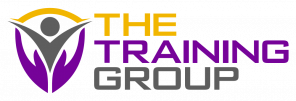Unit 1: Understanding roles, responsibilities and relationships in education and training
Learners will be taught how to analyse the application of pedagogical principles, use assessments, plan lessons and prepare for the classroom environment.
Understanding and using inclusive teaching and learning approaches in education and training
Planning to meet the needs of learners in education and training (Copy 1)
Assessing learners in education and training (Copy 1)
Using resources for education and training (Copy 1)
Unit 2: Teaching, Learning & Assessment In Education & Training (Copy 2) (Copy 1)
Learners will be taught about their responsibilities as educators, educational legislation, meeting the needs of the learners and how to teach in a student-centred manner.
Unit 3: Theories, Principles & Models In Education & Training (Copy 2) (Copy 1)
Learners will be taught ways in which theories, principles and models of learning can be applied to teaching, learning and assessment.
Unit 4: Wider Professional Practice & Development In Education & Training (Copy 2) (Copy 1)
Learners will be taught about the concepts of professionalism and dual professionalism in education and training and how they can apply this within the classroom.
Unit 15: Inclusive Practice (Copy 2) (Copy 1)
Learners will be taught how to review the impact of personal, social and cultural factors on learning and teaching.
Unit 17: Preparing for the mentoring role (Copy 2) (Copy 1)
Learners will be taught how to analyse the skills and qualities required for a the mentoring role teachers play in education.
Unit 25: Developing, using and organising resources in a specialist area (Copy 2) (Copy 1)
Learners will be taught how to analyse how theories, principles and models of inclusive curriculum design can be used to inform resource development in own specialist area.
No questions yet
Be the first to ask your question! You’ll be able to add details in the next step.
Ask a new question
Add an answer

Principles of Resource Design: Creating Effective Learning Materials
Introduction:
Designing effective resources for teaching and learning is crucial to ensure that learners have a meaningful and engaging experience. In this article, we will discuss four key principles of resource design: clarity and simplicity, relevance and alignment with learning objectives, adaptability for diverse learners, and accessibility and usability. These principles can guide you in creating resources that are well-structured, engaging, and inclusive.
- Clarity and Simplicity:
Clear and simple resources help learners understand concepts more easily and reduce cognitive load. To achieve clarity and simplicity, consider the following guidelines:
-
Use clear and concise language: Avoid jargon and complex sentences. Write in plain language to ensure learners can easily comprehend the content.
-
Organize content logically: Structure the content in a way that flows naturally from one topic to the next. Use headings, subheadings, and bullet points to break up large blocks of text.
-
Use visuals to support understanding: Images, diagrams, and charts can help learners visualize complex ideas and processes.
Article: Writing clearly and simply.
- Relevance and Alignment with Learning Objectives:
Ensure that your resources align with the learning objectives of your course or lesson. Aligning resources with learning objectives ensures that learners engage with the necessary content to achieve the desired learning outcomes. To ensure relevance and alignment, consider the following:
-
Review learning objectives: Regularly review the learning objectives to ensure that your resources cover the required content.
-
Use relevant examples and case studies: Choose examples and case studies that directly relate to the learning objectives and are relevant to learners’ interests and experiences.
-
Assess the effectiveness of resources: Regularly evaluate the effectiveness of your resources in helping learners achieve the learning objectives, and make improvements as needed.
Article: Aligning teaching strategies with learning objectives
- Adaptability for Diverse Learners:
Diverse learners have different learning styles, cultural backgrounds, and abilities. Design resources that can be adapted to accommodate these differences, ensuring that all learners can engage with the content effectively. To create adaptable resources, consider the following:
-
Offer multiple formats: Provide content in various formats, such as text, audio, and video, to cater to different learning preferences.
-
Incorporate cultural sensitivity: Use inclusive language, diverse examples, and culturally relevant content to make resources more relatable for learners from different backgrounds.
-
Provide differentiated instruction: Offer additional support materials and alternative activities to cater to learners with different skill levels and abilities.
Article: Designing Learning and Assessment in the digital age
- Accessibility and Usability:
Accessible and usable resources ensure that all learners, including those with disabilities, can engage with the content effectively. To create accessible and usable resources, consider the following:
-
Use accessible formats: Ensure that your resources are available in formats that can be accessed by screen readers or other assistive technologies.
-
Include captions and transcripts: Provide captions for videos and transcripts for audio content to accommodate learners with hearing impairments.
-
Choose legible fonts and colors: Use fonts and colors that are easy to read and have sufficient contrast to ensure that learners with visual impairments can access the content.
-
Test for usability: Regularly test your resources with diverse learners to ensure that they are user-friendly and accessible.



